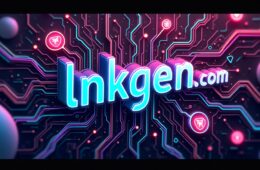
In 2025, static content has become obsolete. Today’s consumers expect digital experiences that are tailored in real time to their interests, behavior, and stage in the buyer journey. As a result, forward-thinking brands are leveraging AI to create dynamic, adaptive content that evolves with each user interaction. From AI-generated blog posts that respond to trending search data to landing pages that automatically customize headlines and CTAs based on user profiles, personalization at scale is no longer a luxury—it’s a baseline expectation.
The real power lies in automation with strategic intent. Modern AI platforms, such as OpenAI’s language models and advanced content optimization tools, allow marketers to not only create content rapidly but also to test variations and scale high-performing assets across multiple channels. These tools can analyze audience engagement, keyword trends, and competitive insights to refine messaging continuously. The result is a smarter, faster content engine that boosts relevance, enhances user experience, and ultimately drives better performance across the funnel.
Trick: Use AI not just to write content, but to test hooks, swap out headlines based on real-time engagement, and adapt content strategy weekly based on audience behavior.
2. Predictive Lead Scoring and Behavioral Targeting
Marketing automation in 2025 goes beyond email sequences. Brands are using machine learning to predict which leads will convert—and when. With integrations across CRM, ad platforms, and website behavior, marketers can assign weighted scores to leads and automatically route them into tailored funnels. This drastically increases conversion rates and improves sales alignment.
Trick: Implement AI-powered lead scoring tied to behavioral signals (time on page, return frequency, scroll depth) and trigger custom nurture sequences based on score ranges.
3. Search Intent Optimization Over Keyword Stuffing
In 2025, Google’s algorithm has become even more sophisticated, prioritizing content that genuinely addresses user needs over content that simply matches keywords. Winning in search now requires a deep understanding of search intent—knowing why someone is searching and what solution they’re hoping to find. Rather than stuffing pages with keywords, successful marketers are creating content that directly answers user questions, resolves pain points, and guides them through the decision-making process in a meaningful way.
This shift toward intent-driven content has led to a more strategic and layered approach. Marketers are combining comprehensive long-form articles with supportive elements like FAQs, explainer videos, and visual aids that enhance clarity and user experience. They’re also using structured data and schema markup to increase visibility through featured snippets, knowledge panels, and voice search. By aligning content strategy with user intent and enhancing it with technical SEO elements, brands can improve both search rankings and audience trust in a highly competitive digital space.
Trick: Map content to all levels of intent—informational, navigational, and transactional—and use AI to fill gaps your competitors haven’t covered yet.
4. Smart Ad Automation and Budget Reallocation
With digital ad costs climbing and competition for attention at an all-time high, squeezing every possible return from your media spend is no longer optional—it’s mission-critical. Marketers who cling to manual bidding or static budgets risk bleeding cash on underperforming placements while faster, data-driven rivals race ahead. In 2025, the brands that win start by accepting one truth: human reflexes alone can’t keep pace with real-time auction dynamics, platform algorithm shifts, and the sheer volume of performance data generated every second.
That’s why elite teams now rely on AI engines to manage campaigns in the moment. Smart bidding algorithms ingest live signals—audience behavior, device, location, time of day, even weather—and adjust bids before an impression is served. Automated creative testing launches dozens of ad variations simultaneously, then reallocates impressions toward the copy-image combinations driving the best engagement or conversion rates. Layered on top of this is AI-guided budget reallocation, which shifts spend hour-by-hour (or minute-by-minute) from lagging ad sets to surging ones, ensuring every dollar is deployed where it performs best.
The result is a marketing machine that optimizes itself while you sleep. Your role shifts from tweaking bids and pausing ads to setting strategy, defining guardrails, and interpreting insights surfaced by the system. By letting AI handle split-second decisions and iterative testing, you free up time for higher-value work—creative ideation, audience research, and long-term growth planning—while consistently extracting more revenue from the same—or even a smaller—budget. In short, success in 2025 isn’t about running ads; it’s about empowering intelligent systems to run them for you.
Trick: Set up rules that auto-pause underperforming ads, shift budget to high-converting campaigns hourly, and trigger creative refreshes every two weeks based on CTR trends.
5. Voice and Visual Search Optimization
Voice search is now standard on mobile and smart devices, while visual search (via images and screenshots) is becoming a dominant force in e-commerce. Optimizing your digital presence for both is no longer optional. Use structured data, alt tags, and AI-generated image metadata to stay visible across voice- and image-based discovery channels.
Trick: Use AI tools to generate schema markup for every product/service page and optimize image content for Google Lens and Pinterest visual search indexing.
6. Micro-Influencers with Automated Collaboration Flows
Influencer marketing hasn’t faded—it’s evolved. Instead of focusing on mega-celebrities, brands are turning to micro-influencers with niche followings and higher engagement. What’s different in 2025 is how campaigns are run: influencer outreach, contract management, and content tracking are now automated from pitch to post.
Trick: Build an influencer pipeline using AI tools that scrape engagement data, vet credibility, and auto-send outreach emails with dynamic offers based on influencer tier.
7. First-Party Data and Customer Retention Systems
As privacy regulations tighten and third-party cookies continue to phase out, owning and leveraging first-party data has become a critical asset in digital marketing. In 2025, brands can no longer rely on external platforms to track user behavior or deliver audience insights. Instead, the most effective marketers are proactively building strong first-party data ecosystems. This includes creating value-driven gated content that encourages email capture, developing loyalty programs that reward engagement, and using intelligent forms to gather meaningful behavioral data at every touchpoint.
Once collected, this data becomes the engine for personalized marketing at scale. With advanced CRM segmentation, brands can deliver hyper-targeted messages, automated upsell flows, and precise remarketing campaigns that feel more relevant and less intrusive. Even more, first-party data enables marketers to accurately model customer lifetime value, forecast retention trends, and optimize spend accordingly. In this new era of consent-based marketing, brands that take ownership of their data and use it wisely are the ones best positioned to build long-term, profitable customer relationships.
Trick: Use quiz funnels or gated tools to collect first-party data, then build hyper-personalized retargeting flows using email and custom ad audiences.
Future-Proof Your Marketing with the Right Partner
The common thread in all of these 2025 digital marketing tricks is automation fueled by intelligence. It’s not enough to do more—it’s about doing it smarter, faster, and more personalized than your competitors. That’s why businesses need more than a basic agency—they need a partner that builds systems, not just campaigns.
At Unify Node, we specialize in custom AI-powered marketing automation tailored to your unique business goals. From predictive lead scoring and dynamic content engines to paid media optimization and CRM integration, we engineer intelligent systems that scale with you. If you’re ready to move beyond outdated tactics and dominate in 2025 with cutting-edge automation and strategy, Unify Node is here to help.
Let us build the marketing machine behind your next stage of growth.

